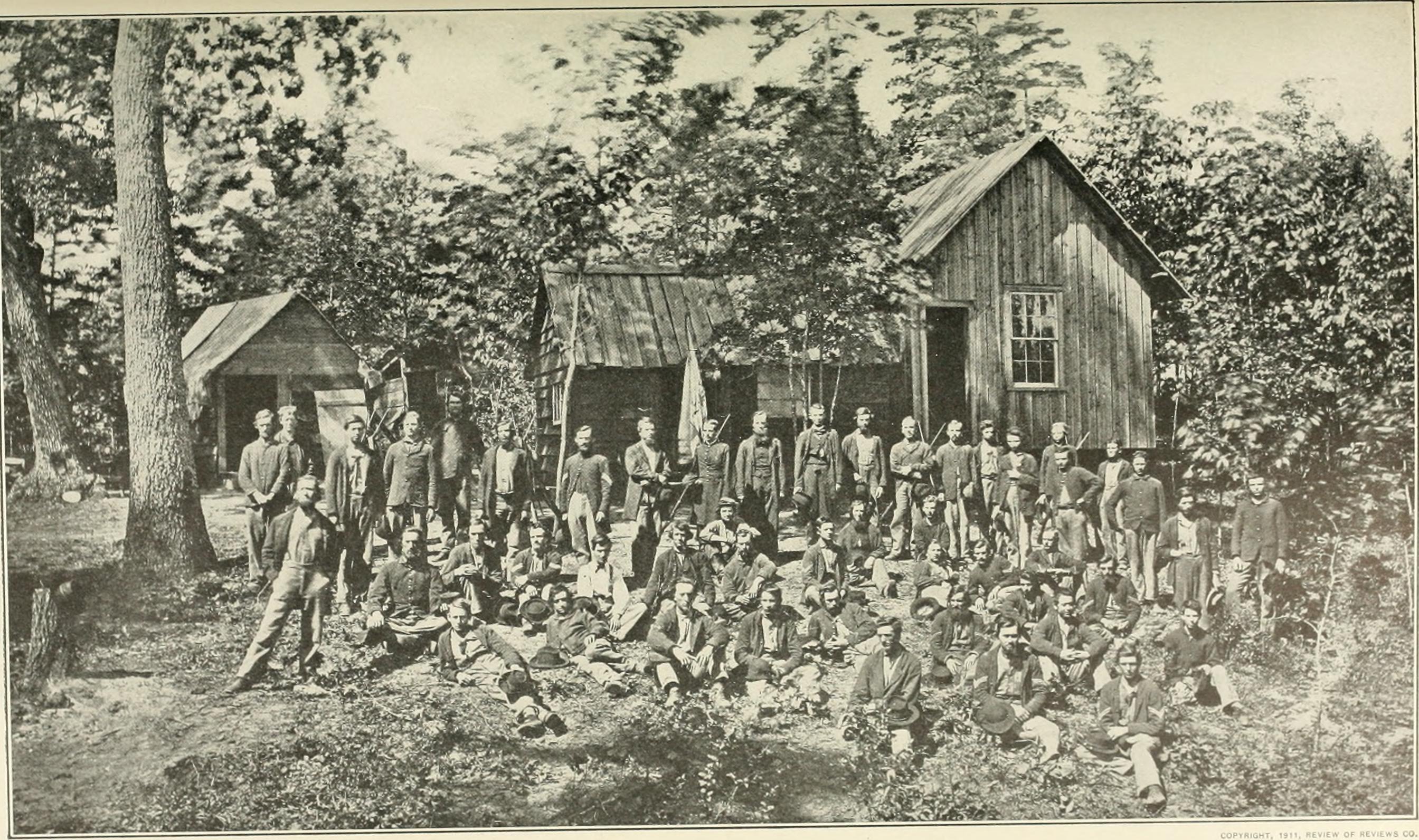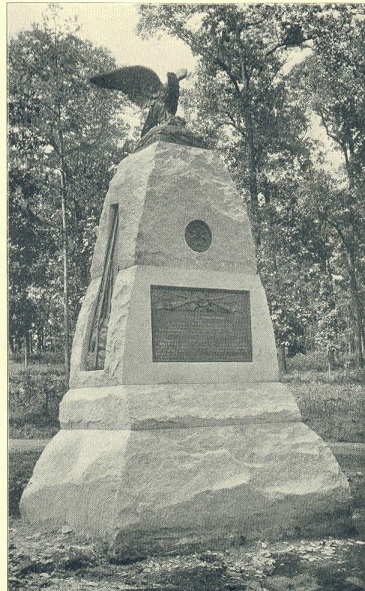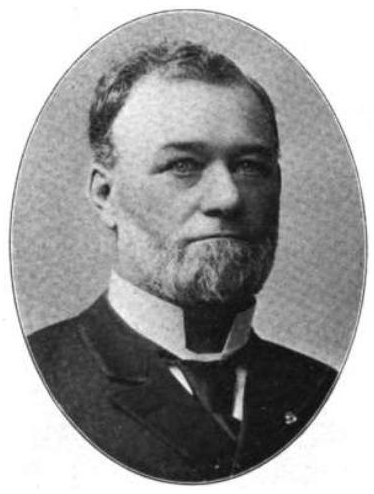
(wikipedia.org)
There were thousands of units that served in the Civil War with many being unknown even though serving during famous battles. The 21st Michigan Volunteer Infantry Regiment was a lesser-known unit that fought in battles such as Chickamauga, Chattanooga, and more. They saw many struggles through their service and helped the Union towards victory.
The 21st Michigan

(Charles Eugene Belknap)
The 21st was made up of volunteers across Michigan and the unit was originated in Ionia, MI. After creation in 1862, the unit moved South and started its movement through Kentucky. Playing a part in the battle of Perryville, then continuing through Kentucky and Tennessee to fight in the Battle of Stone’s River and more. The unit saw many other battles, faced many casualties, and prisoners of war. They were constantly struggling for men, “the Twenty-first could muster less than 300 men.” (Genco, 2012) The unit struggled to fill out an entire regiment throughout the war due to many casualties. The 21st faced casualties throughout the war, a total of three-hundred seventy-seven fatalities. A majority of those deaths regarded to disease with only three officers and eighty enlisted who killed in action or mortally wounded. They also suffered captured officers, causing a breakdown of leadership that had to be overcome. The unit was finally disbanded after a long few years of service in 1865. A memorial was erected in Georgia for the unit’s important service during the Battle of Chattanooga where they conducted engineering efforts.
Sherman’s Bummers
The 21st Michigan was part of “Sherman’s Bummers”, the foragers of Major General Sherman’s army. They took part in Sherman’s March to the Sea through Georgia. The Bummers were notorious for being highly destructive in nature and would loot and vandalize Southern homes and towns. The Bummer’s efforts could be seen as less than moral but it played an important role in destroying Confederate infrastructure and morale. In doing so, the Confederates could not supply its troops and sustain the war effort. Cutting supply lines and destroying enemy resources plays an important role in creating dominance over the enemy. While the enemy stretches their forces, ammunition, and food thin, the attacking force can overwhelm them. It is important to build and keep a strong friendly logistical line of supplies but it also important to destroy the enemy’s logistic capabilities. Destroying enemy logistical lines can create major advantages against the enemy within single battles and in the long-run strategy.
The 21st did not just do engineering tasks and serve as infantry in combat, they were tasked with other details. One type of detail they met with frequently was a foraging detail. The foraging detail was for the purpose of gathering and escorting food for the unit and accompanying units. The Bummers did these types of missions were aggressive and “soldiers were met with a variety of reactions to this seizure” (Genco, 2012). Civilians reacted violently sometimes to the seizure or pledged support of the Union and gave their food to the soldiers.
Engineering Efforts
Most of military history focuses on battles, strategies, and significant events. Important but usually overlooked events and efforts are done by supporting elements. Support elements are crucial to every war effort and can make or break battles. Combat elements are not able to fully commit and be prepared without logistic support. Logistic support is essential to the war effort in supplying materials, providing medical, and rebuilding infrastructure. The 21st was an Infantry regiment by trade and served in many battles but they served as important engineers and workers rebuilding Chattanooga. After the battle of Chattanooga, the Union took control of the town and planned to make it a Union supply for the war efforts as the Union moved south. Working as lumberjacks and carpenters the united erected the “Military Bridge” at Chattanooga. “[General] Wagner requested that men from the Michigan Engineers…lay a pontoon bridge across the Tennessee” (Hoffman, 2077). The bridge helped supply the town and the Army with important supplies and troops. Without the bridge, resupplies and reinforcements would have taken longer. The 21st did more than just work on the bridge, they helped rebuild buildings and install a water pipeline to supply the Union hospital in Chattanooga. Medical services are important for any war effort and the immense casualties during the Civil War proved to be a lot more than the doctors and nurses could handle. Providing any necessary supplies to the hospital was a great help.

(Chattanooga Public Library)
Due to the logistical needs of the Army at the time, the 21st was switched from infantry status to engineering status. This switch depicts the importance of engineering support during war is major and plays a key role in providing infrastructure and resources to other military elements. Important infrastructure such as factories, bridges, railroads, and other buildings were important to the war effort and engineering elements worked diligently to make sure combat elements were supplied. The medical capabilities during the Civil War were lacking severely compared to modern times. The mass amount of casualties faced were overwhelming and soldiers needed to be housed. Engineers were able to re-purpose buildings into medical buildings and provide supplies. The unit was taken off engineer duty to help support General Sherman for the March to the Sea. “The detail added…over one hundred men..to permit it to be withdrawn from the engineer duty…to take and active part again in the front.” (Bates, 1894). Many units, including the 21st, had their duties changed based on their numbers and what the Army deemed as necessary.

(Franklin Ellis)
Libby Prison & Colonel McCreery
The 21st Infantry faced many challenges through their service and provided much needed support. A major struggle they encountered was the capture of their commanding officer, Colonel McCreery. While the unit was supporting operations at the battle of Chickamauga, he was wounded and then captured. The Confederates transported him to Libby Prison in Richmond, Virginia. Libby Prison was famous for its horrendous conditions and overcrowding. The prisoners there were mainly Union officers and held over one thousand prisoners. The Prison, as described by McCreery on his travel there, “that prison-house of torture and slow death, familiarly known as the ‘Libby Prison.’” (McCreery, 1893) McCreery was imprisoned in September 1863 and spent his time in Libby Prison until February 1864. In February, many officers, including McCreery, made a daring escape through a tunnel that they dug. There were many escapes from all Civil War prisons, but the Libby Prison Escape proved to one of the most successful. At least 50 Union officers escaped through the tunnel and made it back to Union lines, the other of the 109 escapees were recaptured. Colonel McCreery described his experience as a prisoner of war in a paper he wrote, “My Experience as a Prisoner of War, and Escape from Libby Prison”.
In the paper, McCreery describes the events from the moment he regained consciousness on the battlefield through his recovery, prison time, and eventually his escape. When McCreery awoke, he saw Confederate soldiers approaching, calling towards them for water, one approached and gave him a drink. The soldiers took him to the Confederate location for wounded, Union and Confederate. McCreery noting the immense number of Union soldiers, 700 or 800, lying on the ground with no shelter and barely any food trying to nurse their own wounds. McCreery did not receive any medical attention for his wounds until days later in Atlanta, in transportation to Libby Prison. Imprisoned officers were allowed to write very short letters home and were delivered through the Truce boat. A logistical part of the war that goes unnoticed but provides a sense of humanity and brotherhood between the two Armies.
The two fighting Armies were able to work together to ensure, to some capability, casualty care, prisoner welfare, and communication. While fighting on the battlefield, they saw that the logistical capabilities of each Army were important and struggles occurred. As such the Confederates relied on Union supplies to take care of Union prisoners of war. After explaining the setup of supplies and mail, McCreery details the breakdown of that support line and that food became short and conditions deteriorated even more within Libby Prison. He finally escaped the prison through a tunnel with over a hundred other officers. McCreery made it back to Union lines, “It was like passing from death unto life, and our hearts filled with gratitude” (McCreery, 1893).
Logistical Concerns
As seen through Colonel McCreery’s experiences and other historical texts, the military prison system was a major logistical concern. Libby Prison was an extreme example of bad conditions with prisoners facing disease, starvation, and lack of medical care of wounds. Prisoners of war can put a major hindrance on both sides of a war. In regards to the civil war and Libby Prison, the Union lost many officers necessary to mission success. The Confederates losing the war and struggling to even supply their soldiers had to take care of a thousand Union prisoners of war. A majority of those prisoners needing medical care that they barely received. Food supplies so low that the prisoners relied on packages sent from home to survive. The Confederates logistical capabilities lacked that of the Union due to manufacturing and agricultural abilities, plus the Southern railroads refused to work with the Confederate Army.
A military’s operational success relies heavily on the logistical capability of it’s supporting elements. All throughout history and not just the Civil War, the logistical support is key to a military’s success. The Civil War showed great leaps in logistical capabilities due to the emergence of new technology in comparison to the Revolutionary War. Improved transportation of personnel and supplies allows for greater utilization of forces, supporting personnel, and resources among the warfront. Supporting and logistical efforts are key to success in wars. The service of the 21st Michigan shows that units that are not directly fighting the enemy can have great effects on the progress of the war. The logistical battle of any war can be complicated and it is necessary that personnel and resources get where they need to be. Much of military history focuses on the combat and tactical ideas but the logistical struggles and success are often not explored.
Conclusion
There is a reason that in modern militaries that a majority of personnel are in support and combat support roles in order to make sure that all logistical problems are solved. Both today’s militaries and the Union and Confederate Armies faced problems regarding transportation, ammunition, uniforms, food, medical care, and other resources. Military transportation in the 1860s relied heavily on trains and it was necessary for the Armies to solve the logistical problem of working with the Railroad owners. Forcing an agreement between the federal government and private business owners that either did or did not support the war effort. Public opinion of war can be a problem or help in solving military logistical problems. As such many Union businesses supported the war effort and worked with the Army to allow transportation and supply the Army with resources. The Confederates, however, had struggles with Southern business owners that wanted no business with the war and needed to focus on their own business. Logistical means of any war effort face many struggles but they must be solved to support the war effort.
There is much more to war than just fighting. The 21st Michigan Volunteer Infantry proved that. They were an infantry regiment that made their way through the South, participating in famous battles and sieges such as Stone’s River, Chattanooga, Chickamauga, and Perryville. While being an infantry unit, they served as an engineering element that made great strides to benefit the Union. Like their work as carpenters and lumberjacks at Chattanooga building storehouses, The Military Bridge, the water pipeline. Support of the war effort is just as or even more important than the front line fighting since without the resources, logistics, and men to fight a war, the fighting will be quickly lost. There are many units similar to the 21st Michigan Volunteer that are rarely heard about but without them the tide of the Civil War could have been much different.
Primary Sources
Source 1. Bates, Marcus (1894). “From Michigan to Chattanooga in 1862,” Glimpses of the Nation’s Struggles: 223-234. https://babel.hathitrust.org
Source 2. McCreery, William (1893). My Experience as a Prisoner of War and Escape from Libby Prison”. https://books.google.com
Secondary Sources
Source 3. Hoffman, Mark (2007). “My Brave Mechanics”: The First Michigan Engineers and Their Civil War. Detroit, MI. https://books.google.com
Source 4. Genco, James (2012). Into the Tornado of War. Bloomington, IN. https://books.google.com
Source 5. Carr, Matther (2015). “Sherman’s Ghosts”: Soldiers, Civilians, and the American Way of War. New York, NY. https://books.google.com
Source 6. Hess, Earl. “Civil War Logistics”: A Study of Military Transportation. The United States. https://books.google.com
Further Reading

